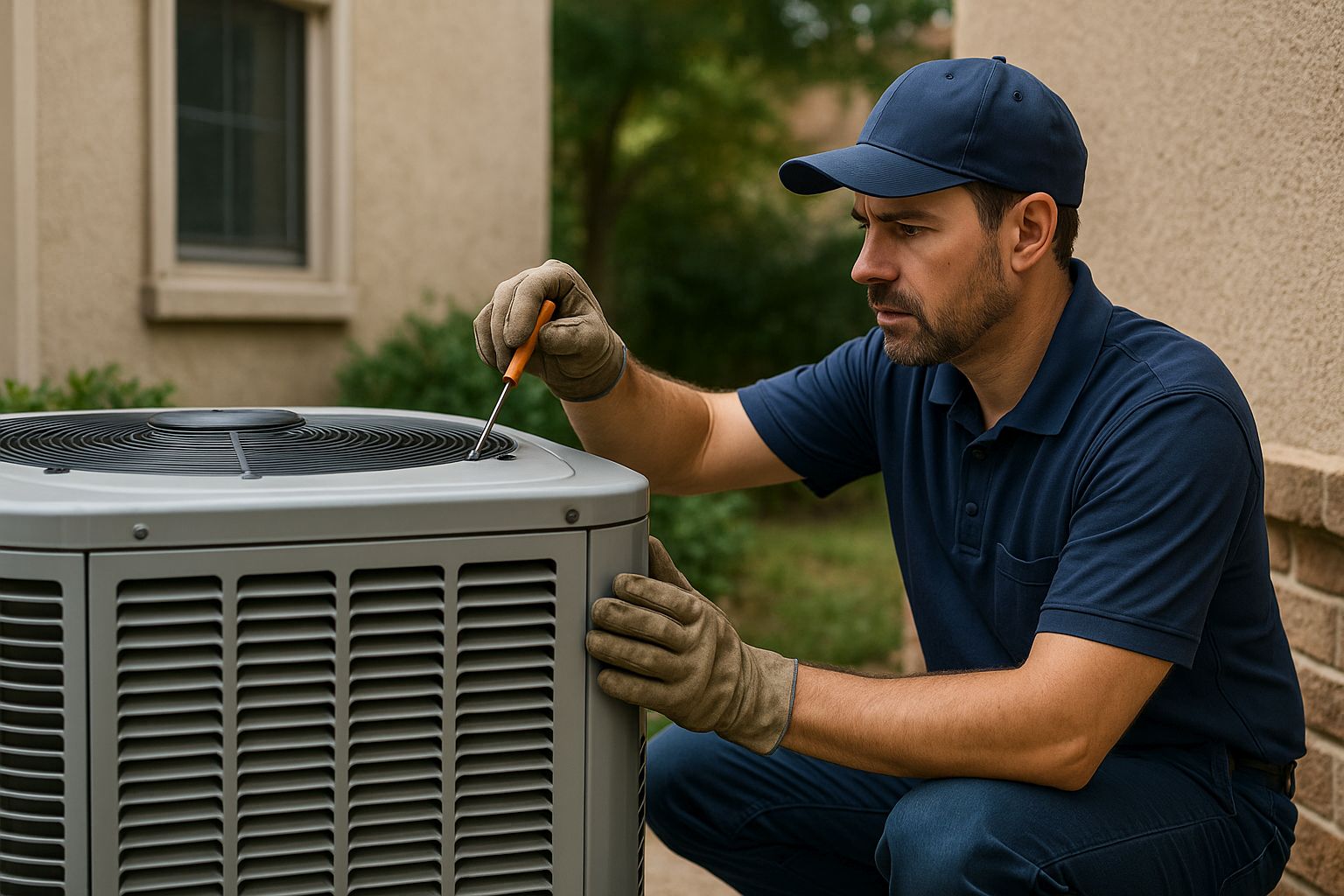Making Smart HVAC Decisions in the Vegas Climate
The question of whether to repair or replace your HVAC system isn’t just a matter of cost—it’s a matter of comfort, efficiency, and long-term peace of mind. In Las Vegas, where cooling systems face relentless summer demands, making the wrong choice can mean more frequent breakdowns, soaring electric bills, and continued discomfort.
This guide breaks down the key factors homeowners should consider when faced with an HVAC dilemma. Drawing from real-world experience in Southern Nevada homes, it explains when a repair is smart, when replacement is inevitable, and how to choose a solution that’s both cost-effective and climate-ready.
1. The Las Vegas Wear-and-Tear Factor
Las Vegas is one of the hardest cities for air conditioning systems :
– 120+ days per year above 90°F
– Peak cooling demand from April to October
– Low humidity amplifying coil wear and static buildup
– Extreme attic temperatures over 140°F
These conditions force HVAC systems to run longer and harder than in milder climates, leading to faster part degradation, more frequent service calls, and reduced equipment lifespan. While a system might last longer in Oregon, 12–15 years is the average in Nevada.
2. Signs a Repair is Still Worth It
Not every issue means your system is finished. Repairs make sense when:
– Your unit is under 12 years old
– The issue is isolated (e.g., motor run assist, contactor, refrigerant)
– You’ve maintained the system regularly
– Energy bills haven’t spiked significantly
– There are no airflow imbalances or persistent comfort issues
Common affordable repairs:
– Capacitor: $200–$300
– Contactor relay: $250–$400
– Thermostat replacement: $200–$400
– Outdoor fan motor: $500–$800
If your system runs well otherwise and repair costs are under 30% of the value of a new system, repairs may buy you several more years of service.
3. Signs It’s Time to Replace
However, a new system may be the smarter choice if:
– Your AC is more than 12–15 years old
– You’ve had 2+ major repairs in the last 24 months
– Your energy bills are climbing
– Comfort problems persist even after servicing
– Your system uses R-22 refrigerant (phased out as of 2020)
Other red flags:
– Uneven cooling or airflow issues
– Loud operation or high humidity indoors
– Burnt smells, circuit breaker trips
These issues often indicate core inefficiencies that repairs can’t fully fix.
4. Case Study: Cost vs. Comfort in Henderson
In 2023, a homeowner with a 14-year-old AC system faced a $1,100 repair estimate for a failed blower motor and leaking evaporator coil. Their system had required service twice the year before.
After evaluation, Wave Heating & Cooling recommended a replacement:
– New 15.2 SEER2 variable-speed unit
– Full system rebalancing
– Smart thermostat integration
The homeowner received $1,200 in rebates and saw a 32% drop in their summer energy bill. Within 18 months, the savings exceeded the additional cost of replacement compared to ongoing repairs.
5. Consider the Energy Efficiency ROI
Older HVAC units typically operate at 10–13 SEER. Today’s systems start at 14.3 SEER2 and can go as high as 20+ SEER2. Every step up equals:
– Lower energy usage
– Smoother, quieter operation
– Better humidity control
– Improved eligibility for rebates and tax credits
Even if the upfront cost of a new system is higher, you recoup that investment over time via:
– Reduced electric bills
– Less frequent service
– Extended warranty coverage (up to 10 years+)
For many Las Vegas homes, the tipping point comes when utility savings meet or exceed the cost of financing a new system.
6. The Hidden Cost of Constant Repairs
Every repair you make to an aging system may seem cheaper in the short term, but the long-term cost adds up:
– Higher likelihood of breakdowns during extreme weather
– Potential for property damage (condensate leaks, electrical shorts)
– Diminished resale value of the home
– Missed opportunity for rebates and incentives
One of the biggest hidden costs is peace of mind. Uncertainty about your HVAC system’s performance adds stress during the hottest time of the year. A new, professionally installed system with a warranty removes that anxiety.
7. Combining Repairs with Upgrades
Not ready for a full system replacement? Consider a hybrid approach:
– Repair current issues
– Add zoning dampers or smart thermostats
– Replace only the outdoor condenser or air handler
– Improve ductwork and airflow
Wave Heating & Cooling offers honest system assessments and can help you plan phased upgrades, prioritizing comfort and budget without waste.
Final Thoughts: Repair, Replace, or Rethink?
Choosing between repairing and replacing your HVAC system isn’t just about fixing what’s broken—it’s about planning for the future. In Las Vegas, where the climate puts every system to the test, your decision impacts comfort, energy costs, safety, and home value.
Wave Heating & Cooling provides comprehensive diagnostics and transparent consultations to help homeowners make informed decisions. Whether you extend your system’s life or start fresh with a high-efficiency upgrade, the right path is always built on data—not guesswork.


